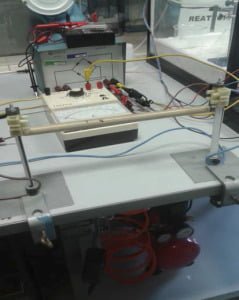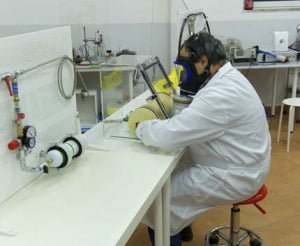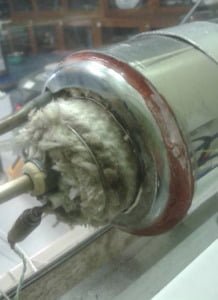
Results of the experiments will be reported at the upcoming 19th International Conference on Cold Fusion this April 2015.
What follows is a slightly-modified google-translated English translation of the report. Open Power’s Ugo Abundo provided these pictures of the construction of the cell. See more detailed photos and read the original report in Italian here.
Report No. 11: Design of re-runs and enhancements of A. Parkhomov reactor (inspired by the E-cat) at Open Power Lab

Based on the recent experiments of the Russian scientist Alexander Parkhomov, of independent reports on E-cat, and the experiments began by the Martin Fleischmann Memorial Project, we must put the emphasis on the serious safety problems, both in the preparation of reagents and in the execution of experiments.
In this regard, we will provide the details of the equipments that have been chosen to carry out the campaign, just launched, the results of which will be presented and discussed at the conference ICCF19 on April 2015.
The experimental set-up is divided into 4 sections, modularly composable:
1) gas supply, with refillable cylinders of hydrogen adsorbed on metal powders, and cylinders of Argon, with adjustment of individual pressures and the possibility of mixing;

3) the reaction chamber for housing the reactors, by containing them in an inert atmosphere in a pressurizable container and very resistant mechanically;
4) the discharge section, with safety valve, expansion tank and filtered collection of the powders in case of explosion, chemical abatement of hydrogen.
Composing subsystems 1), 2) and 4), we get the gaming system in preparation safety of reagents, composing subsystems 1), 3) and 4) is obtained in the reaction system security.

This tube is wrapped in tape, ceramic fiber for high temperature, and has a ceramic tube in direct contact with the ceramic tube interior, for the accommodation of the thermocouples.
The whole is inserted in a copper coil for the cooling water or air, further insulated and contained in a stainless steel tube exterior.
The apparatus constituting the group-reactor heater-chiller, is contained in the chamber 3), powered by the subsystem 1) and connected to the subsystem 4).
A variac guide sending the current, once the rectified by a bridge, to the heater, and a watt meter records the power fed after filtering with a low-pass filter and an isolation transformer.

The difficulty to operate at the high temperatures involved has made necessary tests of thermal resistance tests of the apparatus, as well as the dangerousness of the reagents has required the adoption of manipulation in an inert atmosphere, with recovery of any dust in totally enclosed system.
Ugo Abundo
Open Power
See more photos and read the original report in Italian here.

